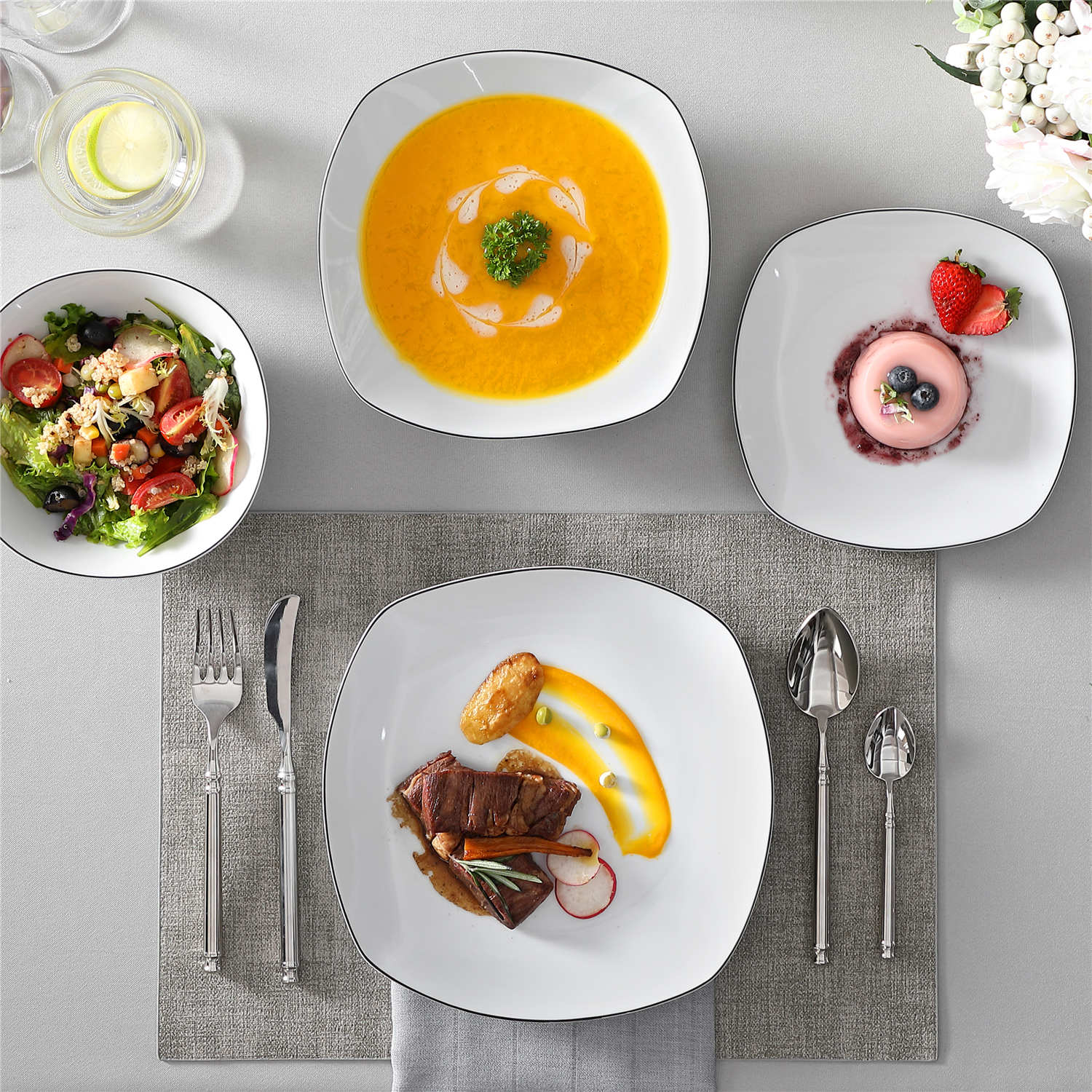Unlocking the Secrets of Porcelain: Elevate Your Dining Experience Today!
Porcelain dinnerware has long been celebrated for its beauty and elegance, transforming everyday meals into extraordinary experiences. Dating back to ancient China, where it was first developed, porcelain is a fine ceramic made from a unique blend of clay, feldspar, and quartz. Its delicate yet durable nature makes it a favorite across cultures and eras. Today, porcelain dinnerware not only serves a functional purpose but also acts as a canvas for artistic expression, showcasing intricate designs and vibrant colors. Whether it's a casual family dinner or a formal gathering, porcelain elevates the dining experience, inviting guests to appreciate both the food and the artistry of the table setting.

Understanding Porcelain Dinnerware
Porcelain dinnerware is a type of ceramic that is known for its strength, translucence, and white color. What sets porcelain apart from other dinnerware types, like stoneware or earthenware, is its high firing temperature, which is typically around 1,200 to 1,400 degrees Celsius. This process results in a non-porous surface that is resistant to staining and scratching. The main components of porcelain include kaolin clay, feldspar, and quartz, which are meticulously mixed and shaped before being fired. This combination not only enhances its durability but also contributes to its elegant appearance. A well-crafted porcelain piece can be both functional and decorative, making it a staple in many households.
Types of Porcelain Dinnerware
There are several types of porcelain dinnerware, each with its own unique characteristics. Bone china, for instance, is made with bone ash, giving it a translucent quality and a delicate appearance. It is renowned for its strength and is often used in fine dining settings. Hard-paste porcelain, originating from Europe, is made from kaolin and petuntse, resulting in a dense and durable product that can withstand high temperatures. Soft-paste porcelain, on the other hand, is typically made with a combination of clay and other materials like glass, making it more fragile but often adorned with intricate designs. Each type serves different purposes, from everyday use to special occasions, allowing individuals to choose based on their dining needs.
Benefits of Using Porcelain Dinnerware
The advantages of using porcelain dinnerware are numerous. Firstly, its durability makes it a practical choice for both everyday and special occasions. Unlike other materials, porcelain is less likely to chip or crack, ensuring longevity. Additionally, the non-porous surface of porcelain means that it does not absorb food odors or stains, keeping it looking pristine after multiple uses. The elegant appearance of porcelain also enhances the dining experience, making meals feel more refined. Moreover, porcelain dinnerware can withstand high temperatures, allowing it to be used in the oven or microwave without fear of damage. Friends of mine who have transitioned to porcelain from other materials have remarked on how it has transformed their dining occasions, adding a layer of sophistication they hadn't realized was missing.
Caring for Your Porcelain Dinnerware
To ensure that your porcelain dinnerware remains in excellent condition, proper care is essential. Start by washing your dishes with mild soap and a soft sponge to avoid scratches. While many porcelain pieces are dishwasher safe, it’s best to check the manufacturer's recommendations. For handwashing, avoid using abrasive materials that could damage the surface. When storing your dinnerware, consider using felt dividers between plates to prevent scratching. Additionally, keep porcelain away from extreme temperature changes, as this can lead to cracks. One helpful tip I learned from a friend is to always check for any chips or cracks after washing, as catching them early can prevent further damage. With a little care, your porcelain dinnerware can last for generations.
Elevating Your Dining Experience with Porcelain
In summary, porcelain dinnerware offers a perfect blend of beauty, durability, and functionality, making it an excellent choice for any dining experience. From its rich history and various types to the numerous benefits it provides, porcelain elevates every meal. By understanding how to care for this exquisite dinnerware, you can ensure that it remains a cherished part of your home for years to come. Whether you’re hosting a grand dinner party or enjoying a quiet meal at home, consider incorporating porcelain into your table setting for an added touch of elegance.



